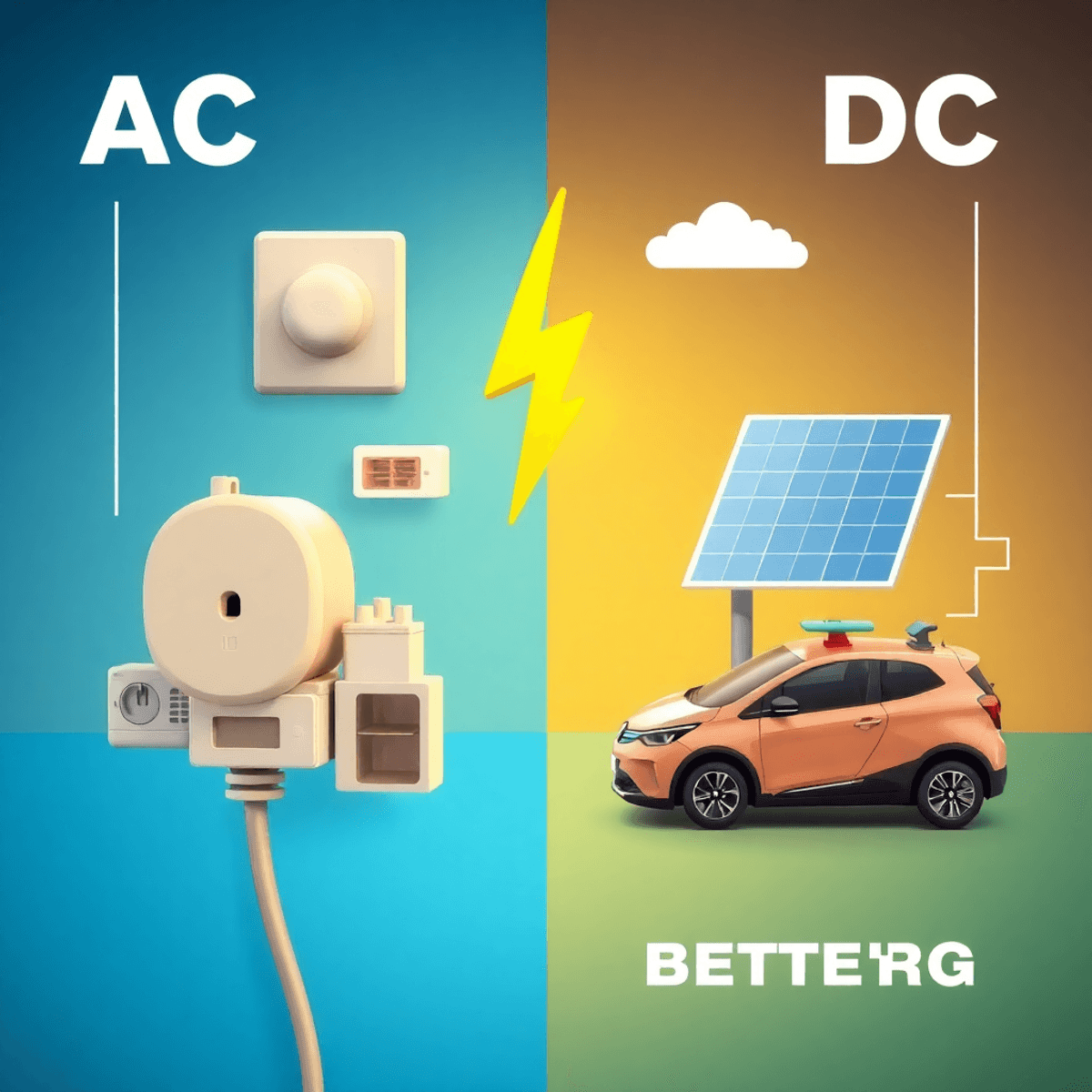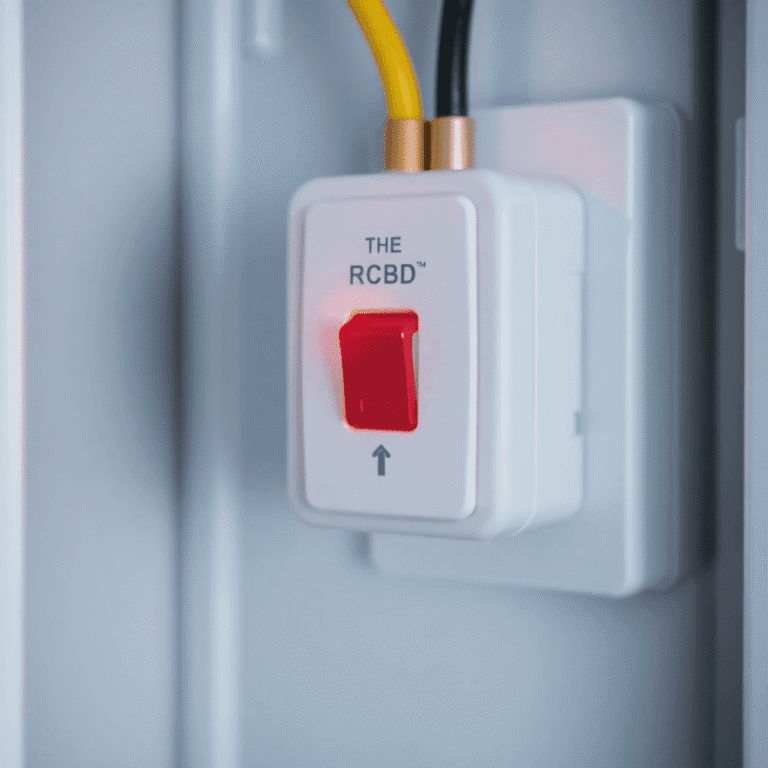The Difference Between AC and DC Power in Everyday Life
Understanding The Difference Between AC and DC Power in Everyday Life is crucial for anyone using electrical devices. AC power (Alternating Current) and DC power (Direct Current) are the two primary types of electrical power used in various applications.
- AC Power: Characterized by its ability to change direction periodically, making it ideal for long-distance transmission.
- DC Power: Maintains a steady flow of electricity in one direction, often used in battery storage and electronic devices.
Recognizing the distinction between these two forms of power can help you make informed decisions about energy usage and safety. In our daily lives, both AC and DC power play essential roles:
- AC power is commonly used for household appliances and industrial machinery.
- DC power is integral to electronic devices, solar panels, and electric vehicles.
By exploring how AC and DC power are utilized in different contexts, you can gain a deeper appreciation for their respective advantages and applications. If you have any questions or need further assistance regarding your electrical needs or understanding, feel free to reach out through our contact page.
Understanding AC Power
Alternating Current (AC) is defined by the periodic change in direction of the electric charge. Unlike Direct Current (DC), which flows steadily in one direction, AC power continuously reverses direction. This characteristic makes AC particularly effective for power distribution across long distances.
Frequency of AC Power
The frequency at which AC power oscillates is measured in Hertz (Hz). In many parts of the world, including Australia and Europe, the standard frequency is 50 Hz. In North America, it is typically 60 Hz. The frequency determines how many times the current changes direction per second.
Importance of Voltage Transformation in AC Power Distribution
One significant advantage of AC power is the ability to easily transform voltage levels using transformers. High voltage transmission minimizes energy loss over long distances, making it more efficient for large-scale distribution. Once the power reaches its destination, transformers reduce the voltage to safer levels suitable for use in homes and businesses.
By understanding these key aspects of Alternating Current (AC), you can appreciate its pivotal role in ensuring efficient and reliable power distribution to meet everyday needs.
Applications of AC Power
You encounter alternating current (AC) power every day, often without noticing its reach. Most household appliances—including refrigerators, washing machines, air conditioners, and televisions—are designed to run on AC supplied directly from wall outlets. Lighting fixtures and kitchen devices such as microwaves and toasters also rely on the consistent supply of AC available in residential electrical systems.
In industrial settings, three-phase AC power is the standard for driving heavy machinery and equipment. This system provides a more balanced load and enables powerful motors to run efficiently with less vibration. Factories, warehouses, and large-scale commercial buildings depend on this setup for everything from conveyor belts to HVAC systems.
The electrical grid itself is optimized for AC transmission. High-voltage lines carry electricity across long distances with minimal loss due to the ease of voltage transformation using transformers. This capability allows energy generated at power plants to reach homes, offices, and factories throughout Melbourne’s western suburbs and beyond. The efficiency gained through this process has cemented AC as the preferred choice for widespread power distribution in modern infrastructure.
From simple home use to demanding industrial applications, the flexibility and efficiency of AC power support the backbone of everyday electrical needs.
Understanding DC Power
Direct Current (DC) power is characterized by a unidirectional flow of electric charge. Unlike Alternating Current (AC), where the current periodically reverses direction, DC maintains a steady flow in one single direction. This consistency in direction and magnitude makes DC power ideal for many applications, particularly those requiring stable and reliable energy supply.
Characteristics of DC Power
- Unidirectional Flow: The electric charge flows consistently in one direction.
- Steadiness: The voltage level remains constant over time, providing a stable power source.
- Efficiency: DC power is efficient for low-voltage applications and energy storage systems.
Steady Flow in DC Current
The steady flow of DC current is crucial for devices that need a constant voltage supply. This makes it particularly useful for:
- Electronic devices: From your smartphone to your laptop, most modern electronics operate on DC power due to its stability.
- Battery-operated gadgets: Batteries provide a direct current, making them compatible with various portable devices.
Importance of DC in Energy Storage Systems
DC power plays a significant role in energy storage systems. With the rise of renewable energy sources like solar panels, which generate electricity in DC form, the importance of efficient energy storage has never been higher. Key points include:
- Solar Panels: Solar panels produce electricity as Direct Current, which can be stored in batteries for later use. To convert this DC electricity into usable AC power for household appliances, solar inverters are employed.
- Electric Vehicles (EVs): Modern EVs rely on large battery packs that store and deliver DC power to the motors.
- Backup Power Systems: Many backup systems use batteries that store DC power to ensure uninterrupted supply during outages.
Understanding the characteristics and applications of Direct Current helps you appreciate its vital role alongside AC power in our daily lives.
Applications of DC Power
1. Electronic Devices Using DC Power
Many electronic devices rely on DC power for their operation due to its steady and consistent flow. Common examples include:
- Laptops
- Smartphones
- Tablets
- LED lighting
- Home appliances with electronic control systems
These devices often feature built-in converters to transform AC power from wall outlets into the DC power they require.
2. Role of DC in Battery Storage and Solar Panels
DC power plays a crucial role in energy storage systems, particularly batteries. Batteries store energy in a DC format, making it essential for:
- Portable electronics
- Uninterruptible power supplies (UPS)
- Renewable energy systems
Solar panels generate electricity as DC power, which is then stored in batteries or converted to AC for use in homes and businesses. This process ensures the availability of clean energy.
3. Utilization of DC in Electric Vehicle Technology
Electric vehicles (EVs) heavily depend on DC power. The primary components utilizing DC include:
- Traction motors – converting electrical energy into mechanical energy to drive the vehicle.
- Battery packs – providing a reliable source of stored energy.
DC fast charging stations are designed to rapidly recharge EV batteries by supplying high-voltage DC directly to the vehicle’s battery, significantly reducing downtime for drivers.
Understanding these applications showcases the versatility and necessity of DC power in modern technology and sustainable practices.
Comparing AC and DC Power
Advantages and Disadvantages of AC Power
Advantages
- Efficient Transmission: AC power can be transmitted over long distances with minimal power loss due to the ease of voltage transformation using transformers.
- Cost-effective Infrastructure: The infrastructure for AC power distribution, including transformers and substations, is well-established and relatively inexpensive.
Disadvantages
- Interference Issues: AC power can cause electromagnetic interference, which can affect sensitive electronic equipment.
- Safety Concerns: The alternating nature of AC power increases the risk of electric shocks, which can be particularly hazardous to the human heart.
Advantages and Disadvantages of DC Power
Advantages
- Stable Voltage: DC power provides a constant voltage, which is ideal for electronics and battery-operated devices.
- Energy Storage: Easily stored in batteries, making it crucial for renewable energy systems like solar panels.
Disadvantages
- Transmission Losses: DC power transmission over long distances is less efficient due to higher energy losses.
- Expensive Conversion: Converting high-voltage DC to lower voltages suitable for use in homes or devices requires complex and costly converters.
Contrasting Transmission Efficiency and Voltage Conversion Methods
AC power’s ability to transform voltages efficiently using transformers makes it ideal for long-distance transmission. High-voltage AC can be stepped down to safer levels for residential or commercial use with minimal energy loss. In contrast, DC power transmission suffers from significant energy losses over long distances. Although high-voltage direct current (HVDC) technology has improved this efficiency, it remains costlier than AC systems.
Voltage conversion in AC systems is straightforward with transformers. However, converting DC voltage necessitates sophisticated electronics like inverters and converters, which adds complexity and expense to the system. This difference highlights why AC remains the dominant method for widespread electrical distribution while DC finds its niche in specific applications like electronics and renewable energy storage.
Safety Considerations with AC and DC Power
Safety concerns related to AC power:
AC power’s alternating nature can pose serious safety risks, particularly to the human heart. The rapid oscillation of AC current can interfere with the body’s natural electrical signals, potentially leading to cardiac arrest if a person is exposed to a high enough voltage. This makes handling and working with AC power extremely dangerous without proper precautions.
Insulation requirements for safe use of DC power:
DC power, while typically perceived as safer due to its steady flow, also presents unique safety challenges. High-voltage DC systems require robust insulation to prevent accidental contact and ensure safe operation. The continuous nature of DC current can cause severe burns and injuries if proper insulation is not maintained.
Key considerations include:
- Appropriate materials: Using high-quality insulating materials that are rated for the specific voltage levels.
- Regular maintenance: Ensuring all insulation is intact and free from damage.
- Safety protocols: Implementing strict safety measures when working with or around high-voltage DC systems.
- Insulation testing: Regularly conducting insulation tests to ensure the integrity of the insulating materials.
Understanding these safety considerations is crucial for both professionals and consumers in everyday life, ensuring the safe utilization of both AC and DC power systems.
Practical Applications in Everyday Life
AC power takes center stage in general power distribution. When you flip a switch at home, the electricity lighting your rooms and running your appliances is almost always alternating current. The design of AC systems makes it possible to transmit electrical energy efficiently over long distances. High-voltage transmission lines deliver power from generating stations to neighborhoods and commercial zones, where transformers safely reduce voltage levels for use in homes and businesses. Industrial machinery, HVAC systems, and large-scale manufacturing equipment all rely on the robust capabilities of AC, particularly three-phase setups that provide consistent and powerful energy for demanding operations.
DC power’s footprint is unmistakable in the electronics industry. Every time you use a smartphone, laptop, or smart TV, direct current is at work behind the scenes. Most electronic circuits are sensitive to voltage changes—DC supplies the steady, reliable flow these components require to function correctly. Battery-powered devices—from remote controls to electric vehicles—depend exclusively on DC. Even solar panels generate electricity as DC before it’s converted to AC for household integration or grid supply.
The coexistence of both forms ensures that everything from heavy-duty industrial motors to delicate microchips receives the specific type of power needed for safe and efficient operation.
Conclusion
Understanding the difference between AC and DC power in everyday life highlights the essential roles both play in our modern world.
- AC Power: Used mainly for powering homes and industries because it can be transmitted over long distances efficiently.
- DC Power: Used in electronic devices, energy storage systems, and new technologies like electric vehicles.
Both types of power work together smoothly, using their advantages to satisfy the various requirements of our electrified lives. Knowing their specific uses increases our understanding of the systems that provide energy for our everyday tasks.
FAQs (Frequently Asked Questions)
What is the fundamental difference between AC and DC power?
Alternating Current (AC) power involves the flow of electric charge that periodically reverses direction, while Direct Current (DC) power features a steady, unidirectional flow of electric charge. This distinction affects their applications and characteristics in everyday life.
Why is AC power commonly used for household appliances and power distribution?
AC power’s ability to easily transform voltage levels through transformers makes it highly efficient for widespread distribution over electrical grids. This efficiency and adaptability make AC ideal for powering common household appliances and industrial settings.
In what applications is DC power predominantly utilized?
DC power is essential in electronic devices, battery storage systems, solar panels, and electric vehicles due to its steady flow characteristic, which suits energy storage and precise electronic functions.
How do the safety considerations differ between AC and DC power?
AC power poses unique safety concerns because its alternating nature can affect the human heart more severely. Additionally, insulation requirements vary; safe use of DC power demands specific insulation standards to prevent hazards due to its constant voltage.
What are the advantages and disadvantages of AC versus DC power transmission?
AC power offers efficient long-distance transmission with easy voltage conversion using transformers but can cause more complex safety issues. DC power provides stable voltage ideal for electronics and energy storage but lacks simple voltage transformation methods and can be less efficient over long distances without advanced technology.
How do AC and DC powers coexist in modern electrified life?
Both AC and DC powers play vital roles: AC dominates general power distribution for homes and industries due to its transmission efficiency, while DC is crucial in electronics, renewable energy systems, and electric vehicles. Their coexistence ensures optimized performance across various applications.









